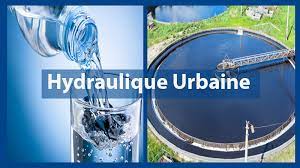Informations du cours

Urban hydraulics encompasses two main areas: drinking water supply and sanitation.
1. Drinking Water Supply:
1.1. Resource Mobilization: This section examines methods and processes for mobilizing drinking water, emphasizing the availability and sustainability of water resources.
1.2. AEP Networks and Structures: Exploration of Drinking Water Supply (AEP) networks and associated structures, with particular attention to the efficient distribution of drinking water in urban areas.
1.3. Management: This part focuses on strategies for managing drinking water supply, incorporating concepts such as conservation, monitoring, and network optimization.
2. Sanitation:
2.1. Sanitation Networks: This section deals with the design of sanitation networks, emphasizing the collection and evacuation of wastewater in urban areas.
2.2. Design of Evacuation Systems: Exploration of design methods for wastewater evacuation systems, taking into account the efficiency and sustainability of infrastructures.
2.3. Wastewater Treatment: Analysis of wastewater treatment techniques, with a particular emphasis on purification to ensure adequate environmental and sanitary standards.
2.4. Wastewater Purification: This part focuses on wastewater purification processes, aiming to make the discharged water comply with regulatory standards.
2.5. Management: Addressing management strategies in the field of sanitation, this section explores the planning and implementation of sustainable systems for wastewater treatment.
- Enseignant: djabri mohamed tayeb
